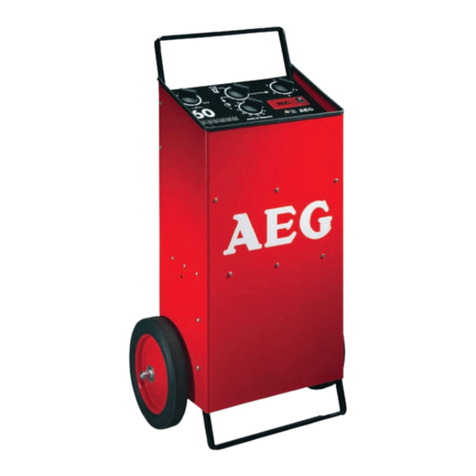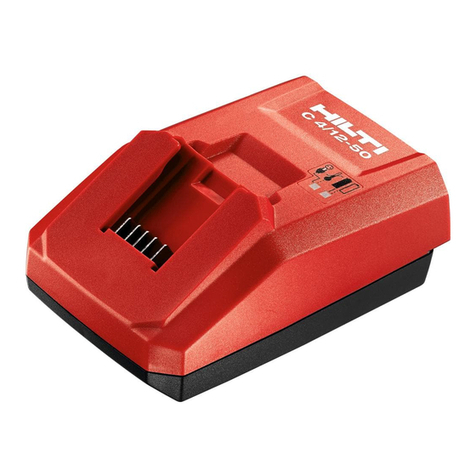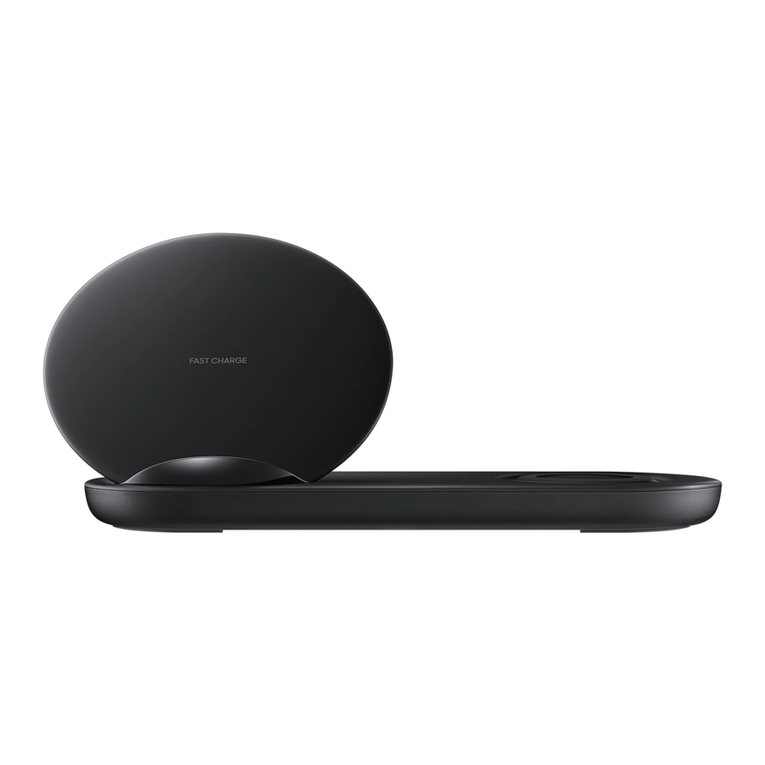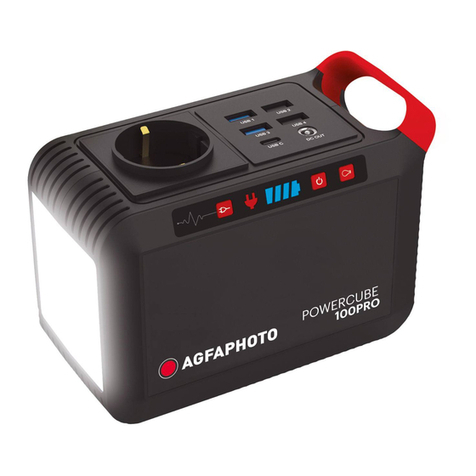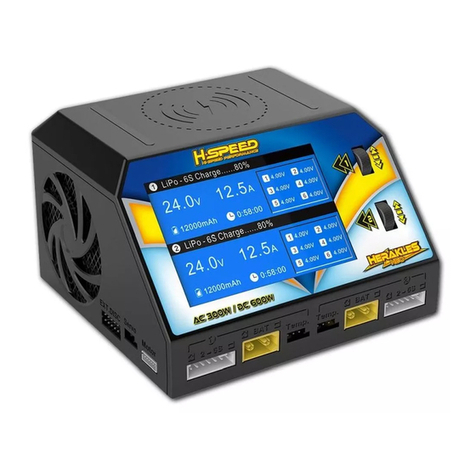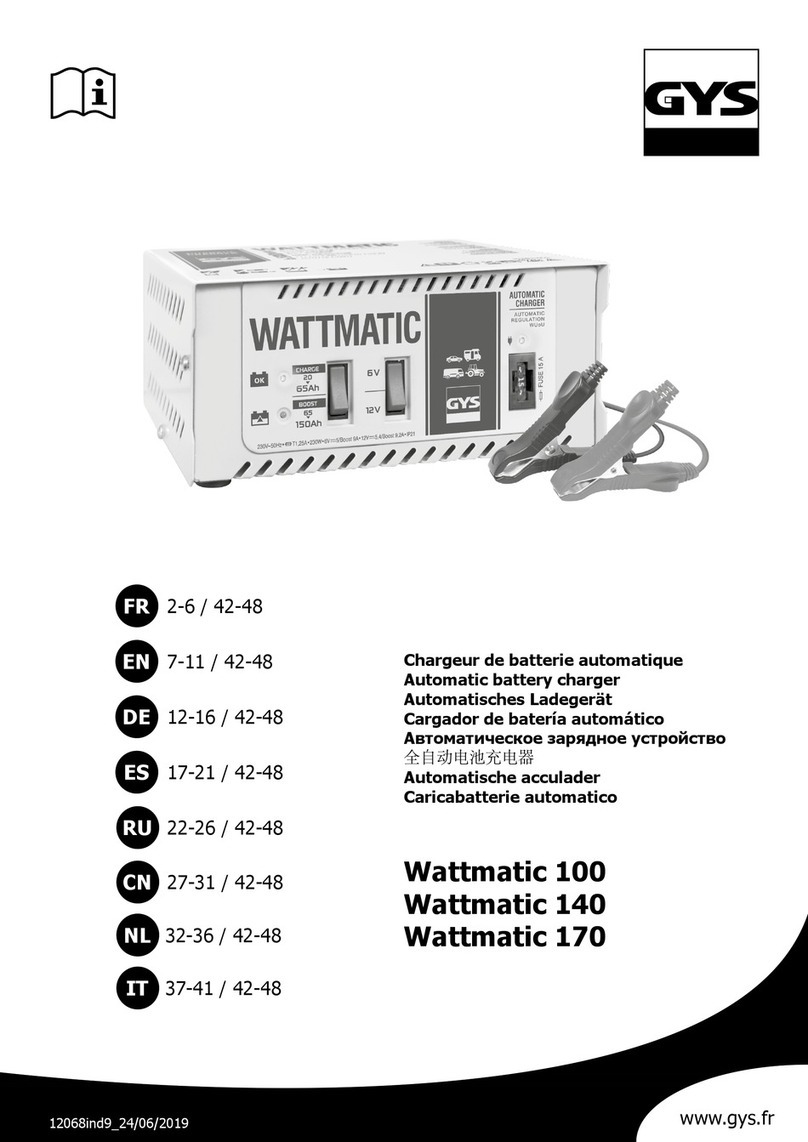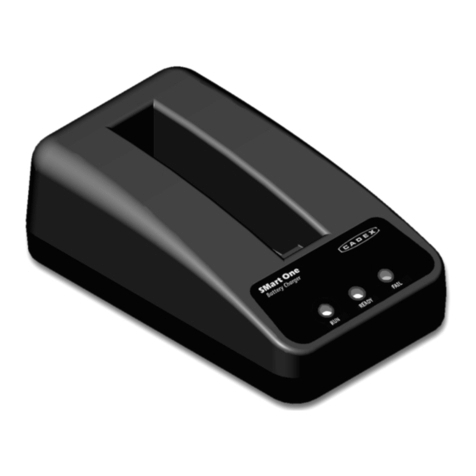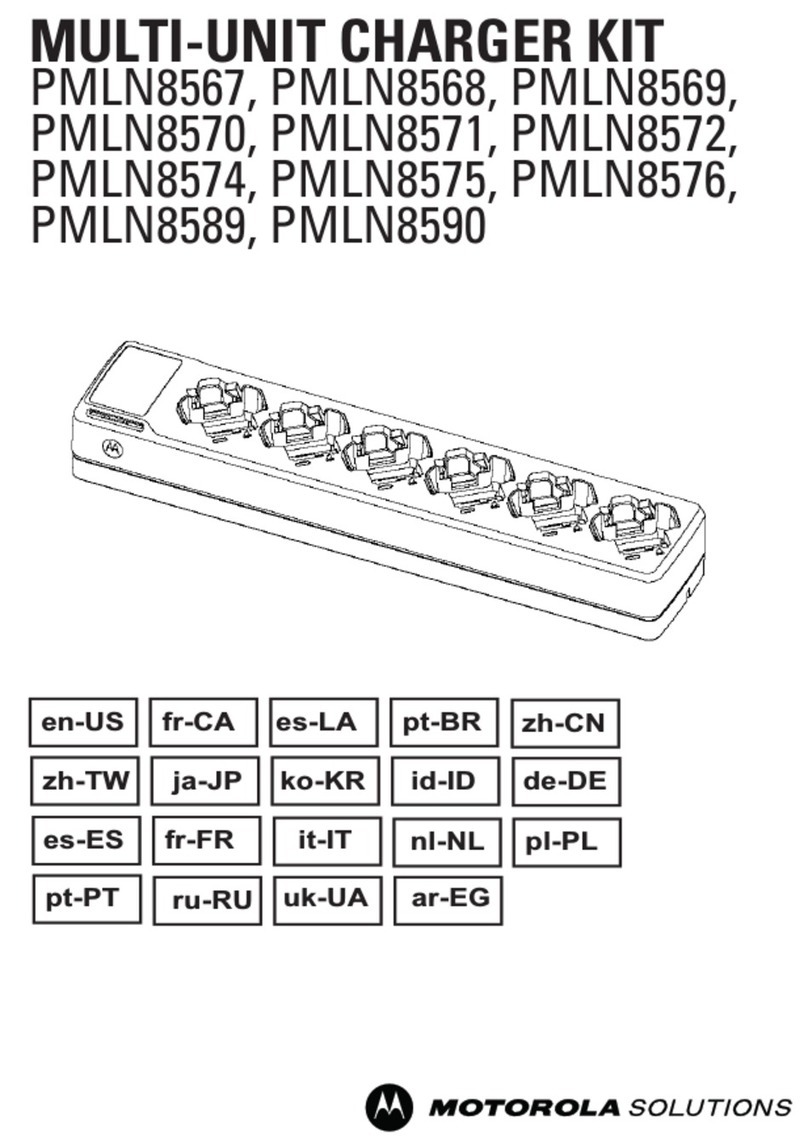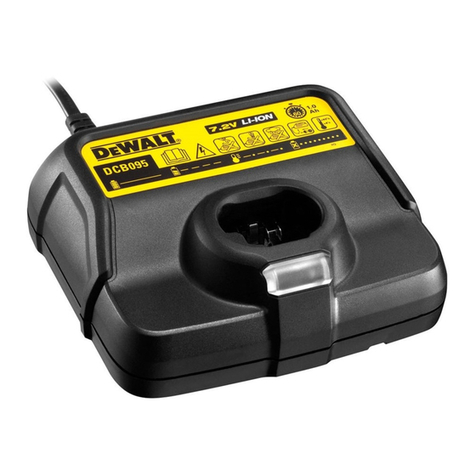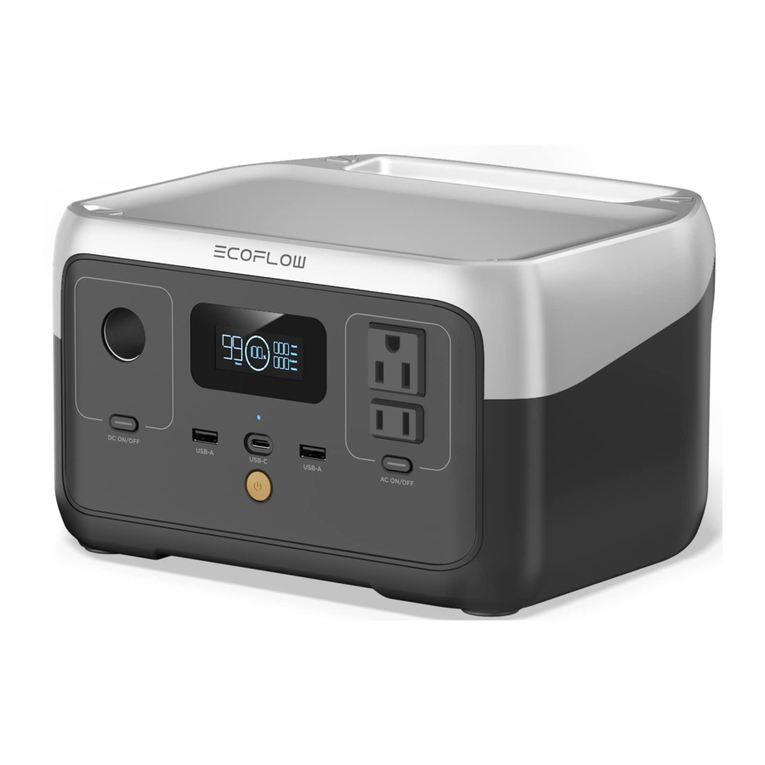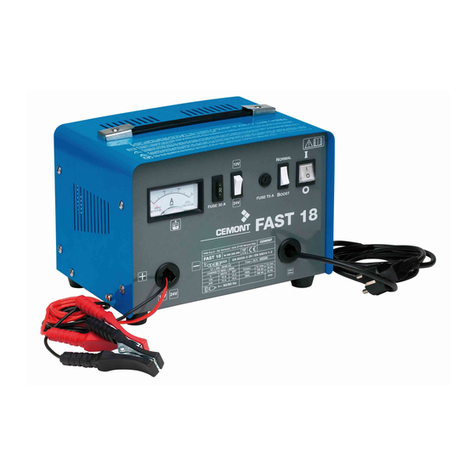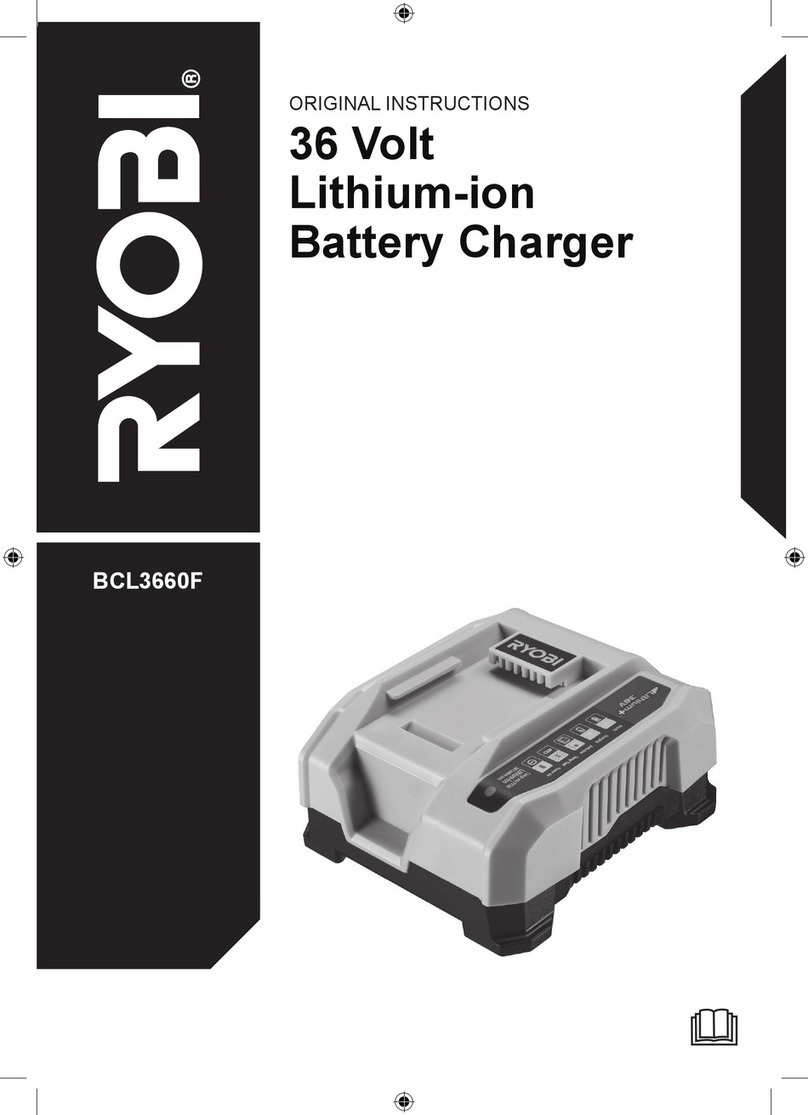Dilog EVSE Adaptor DLEV1 User manual

DLEV1
EVSE Adaptor
Operating Instructions
Revision 1.1

DLEV1 Operating Instructions
- 2 -
Figure 1 Identifying parts of the DLEV1 EVSE Adaptor

DLEV1 Operating Instructions
- 3 -
Figure 2 EV Adaptor connection to MFT with 13A mains lead
Figure 3 EV Adaptor connection to MFT with 3 wire test lead set (image
indicates single-phase (L1) connection)

DLEV1 Operating Instructions
- 4 -
Figure 4 EV Adaptor with Type 1/Type 2 connection to EVSE charger
mounted socket
Figure 5 EV Adaptor with Type 1/Type 2 connection to EVSE charger
with fixed charging cable

DLEV1 Operating Instructions
- 5 -
Limited Warranty & Limitation of Liability
DI-LOG Test Equipment guarantees this product to be free from defects
in material and workmanship under normal use and service for a period
of 2 years. The period of warranty will be effective from the date of
purchase.
(c) Copyright 2022
All rights reserved. Nothing from this manual may be copied, or made
public in any form or manner, either electronically, mechanically, by
photocopying, recording, or in any manner, without prior written consent
from DI-LOG. This also applies to accompanying drawings and
diagrams.
Due to a policy of continuous development, DI-LOG reserves the right to
alter the equipment specification and description outlined in this
publication without prior notice and no part of this publication shall be
deemed to be part of any contract for the equipment unless specifically
referred to as an inclusion within such contract.

DLEV1 Operating Instructions
- 6 -
Table of Contents
Limited Warranty & Limitation of Liability............................................... 5
Table of Contents................................................................................... 6
Introduction............................................................................................ 8
1 User Notes & Instruction Manual Symbols......................................... 9
2 Safety Notes .................................................................................... 10
3 Accessories...................................................................................... 11
3.1 Standard Accessories............................................................... 11
4 Unit Description................................................................................ 12
4.1 Identifying parts of the DLEV1.................................................. 12
5 Using the DLEV1 ............................................................................. 13
5.1 Functions of the DLEV1 Adaptor .............................................. 13
5.2 Connection of the DLEV1 Charge Point Adaptor...................... 14
5.3 Operation of a Charging Station to be Tested .......................... 15
5.3.1 PE Pre-Test ........................................................................ 15
5.3.2 Proximity Pilot (PP) State (Cable Current Simulation) ........ 16
5.3.3 Control Pilot (CP) State (Vehicle Simulation)...................... 17
5.3.4 CP Output Signal Terminals ............................................... 17
5.3.5 CP Error “E” Simulation ...................................................... 18
5.3.6 PE Error (Earth Fault) Simulator......................................... 18
5.3.7 Phase Indicator................................................................... 18
5.3.8 13A Mains Socket............................................................... 19
5.3.9 Measurement Input Terminals L1, L2, L3, N & PE.............. 19
5.3.10 Load Test Using 13A Mains Socket.................................. 19
6 Specifications................................................................................... 20
6.1 Functions.................................................................................. 20
6.2 Outputs (for test purposes only)................................................ 20
6.3 General Features...................................................................... 20
7 Environmental Conditions................................................................ 21
8 Maintenance .................................................................................... 22
8.1 Cleaning ................................................................................... 22
8.3 Service and Calibration............................................................. 23
8.4 Spare Parts............................................................................... 24

DLEV1 Operating Instructions
- 7 -
Disposal of Old Product
This product has been designed and manufactured with high-quality
materials and components that can be recycled and reused.
Please familiarise yourself with the appropriate local separate collection
system for electrical and electronic products.
Please dispose of this product according to local regulations. Do not
dispose of this product along with normal waste material. The correct
disposal of this product will help prevent potential negative
consequences for the environment and human health.

DLEV1 Operating Instructions
- 8 -
Introduction
The DLEV1 is a handheld, testing adaptor designed to interface
between electric vehicle supply equipment (EVSE) and a multifunctional
electrical installation test instrument capable of performing a
comprehensive range of tests.
The DLEV1 will enable the user to safely conduct the following
measurements when used in conjunction with a multifunctional electrical
installation tester:
•PE Pre-Test to indicate the potential presence of dangerous
voltage at the PE terminal before testing commences via a
touch electrode and led indicator.
•Live phase to neutral presence of all phase voltages indicated
by three individual phase led indicators.
•PP State simulation (Proximity Pilot) simulating the current
capabilities of the charging cable; NC, 13A, 20A, 32A and 63A
with a rotary switch.
•CP State simulation (Control Pilot) simulating various vehicle
charge states, A, B, C & D with a rotary switch.
•CP Error “E”simulation where the signal is short-circuited to PE
via a push button.
•PE Error simulates an earth fault interrupting the PE conductor
via a push button.
•4mm input terminals for test leads to connect to multifunctional
electrical installation testers; L1, L2, L3, N and PE conductors
(figure 3).
•CP Signal Output via two 4mm terminals for connection to an
oscilloscope to check waveform and amplitude of the CP signal.
•13A mains socket for multifunctional installation tester
connection or external loading up to 10A (figure 2).
The adaptor is designed to test the function and electrical safety of
charging stations mode 3 for AC charging.
With this adaptor, charging stations can be tested in accordance with
IEC/EN62851-1 and IEC/HD 60364-7-722.
Please read this instruction manual carefully to ensure the safe
performance and function of the test adaptor.

DLEV1 Operating Instructions
- 9 -
1User Notes & Instruction Manual Symbols
This instrument and its operating instructions are intended for use
by trained personnel only.
The following symbols are used in these operating instructions and on
the DLEV1.
Warning of electrical danger!
Indicates instructions must be followed to avoid danger to
persons.
Important, follow the documentation! This symbol indicates that
the operating instructions must be consulted and adhered to in
order to avoid danger.
Equipment protected throughout by double or reinforced
insulation.
Earthing (grounding) terminal
Conformity symbol, the instrument complies with the relevant
directives. It complies with EMC Directive (2014/30/EU),
Standards EN 61326-2-2. It also complies with the Low Voltage
Directive 2014/35/EU), Standards EN 61010-1 and EN 61010-2-
030 are fulfilled.
Conformity symbol, the instrument complies with the relevant
directives. It complies with EMC Directive (Electromagnetic
Compatibility Regulations 2016), Standards BS EN 61326-2-2.
It also complies with the Low Voltage Directive (Electrical
Equipment (Safety) Regulations 2016), Standards BS EN
61010-1 and BS EN 61010-2-030 are fulfilled.
The DLEV1 meets the standard (2012/19/EU) WEEE. This
marking indicates that this product should not be disposed with
other household wastes throughout the EC. To prevent possible
harm to the environment or human health from uncontrolled
waste disposal, recycle it responsibly to promote the
sustainable reuse of material resources. To return your used
device, please use the return and collection systems or contact
the retailer where the product was purchased. They can take
this product for environmentally safe recycling.

DLEV1 Operating Instructions
- 10 -
2Safety Notes
This DLEV1 is fully compliant with the requirements of:
BS EN 61010-1
BS EN 61010-2-30
In order to ensure the safe operation of this adaptor, all notes and
warnings in these instructions must be observed at all times.
The DLEV1 has been designed to make measurements in
a dry environment.
The DLEV1 may be used to test circuits with a maximum
over-voltage Category II, 300 V AC/DC with reference to
earth.
The danger of electric shock is present when PE Pre-Test
indicator lights while performing PE Pre-test. in this case,
further testing must be stopped immediately, ensure a
sufficient connection of your body to earth while
performing this test.
The DLEV1 and all associated cables and leads must be
checked for signs of damage before the equipment is
operated.
Terminals with low voltage CP Signal output (Approx.
±12V) powered by the charging station, when the terminal
marked with " ”is connected to PE, use for test
purposes only and in the case of incorrect wiring or error
of the charging station, these terminals may present a
hazard.
Where the safe operation of the DLEV1 is no longer possible, it should
be immediately shut down and secured to prevent accidental operation.
It must be assumed that safe operation is no longer possible:
- if the instrument or leads show visible signs of damage or
- the instrument does not function or
- after long periods of storage under adverse environmental conditions.
If the DLEV1 is used in a manner not specified by this
document, then the protection provided by the equipment
may be impaired.

DLEV1 Operating Instructions
- 11 -
3Accessories
3.1 Standard Accessories
The DLEV1 is supplied with the following items:
DLEV1 unit
Type 1 Connector Lead
Type 2 Connector Lead
Professional carry case
Operating Instruction Manual
Do not open unit, no other serviceable parts.

DLEV1 Operating Instructions
- 12 -
4 Unit Description
The DLEV1 is a handheld testing adaptor designed to interface between
electric vehicle supply equipment (EVSE) and a multifunctional electrical
installation test instrument. Tests are selected using the two rotary
switches and three push buttons.
4.1 Identifying parts of the DLEV1
The numbering below refers to figure. 1
1. CP Error “E”Button
2. PE Error (Earth Fault) Button
3. PE Pre-Test Touch Electrode
4. PE Pre-Test Warning LED Indicator
5. PP State Rotary Switch
NC No cable
13A 13A cable current capability
20A 20A cable current capability
32A 32A cable current capability
63A 63A cable current capability
6. 13A Mains Socket for test purposes only or loading. Maximum
current 10A
7. PE Measurement Terminal
8. Single & 3 Phase Measurement Terminals (L1, L2 & L3)
9. Phase LED Indicators (L1, L2 & L3)
10. Neutral Measurement Terminal
11. CP State Rotary Switch
A Electric vehicle (EV) not connected
B Electric vehicle (EV) connected & not ready to
charge
C Electric vehicle (EV) connected; ventilation not
required & ready to charge
D Electric vehicle (EV) connected; ventilation
required & ready to charge
12. Test cable for EV charging point Type 1/Type 2 with socket
outlet or fixed cable with vehicle connector
13. EV test cable input
14. CP Signal Output Terminal
15. CP Signal Output Terminal (Connected to PE)

DLEV1 Operating Instructions
- 13 -
5 Using the DLEV1
5.1 Functions of the DLEV1 Adaptor
There are two main functions of the Test Adaptor:
•The DLEV1 adaptor is designed to simulate connection of an
electrical vehicle to the charging station under test by simulating
the communication signals electric vehicles produce when
connected. Connection of the test adaptor to a charging station
triggers the charging process when the correct Control Pilot
(CP) state is selected (A, B, C or D) in conjunction with the
Proximity Pilot (PP) state for cable charging current capability
(NC, 13A, 20A, 32A or 63A).
•To provide easy access to charging terminals L1, L2, L3, N, PE
and to CP signal terminals to which additional measuring
equipment, such as a multifunctional installation tester, can be
connected for further testing. Charging stations should be
tested after installation and testing should be repeated
periodically.
Please refer to the manufacturer's recommendation and national
standards which are linked to IEC/HO 60364-6 for the initial test or
IEC/HO 60364-7-722, required tests are:
•Visual inspection
•Continuity of protective conductors and protective bonding
•Insulation resistances
•Loop/Line impedance
•RCD test
•Function tests, including but not limited to:
oVehicle state A,B,C,D
oError handling Error “E", PE Error (Earth Fault)
oCommunication PWM signal
oMechanical locking of plug
oRotary field/phase sequence
oOther tests

DLEV1 Operating Instructions
- 14 -
5.2Connection of the DLEV1 Charge Point Adaptor
The Test Adaptor can accept the following two connection cables:
•TYPE 2 test cable; for charging stations type 2 with panel mount
with socket-outlet or fixed cable with vehicle connector.
•TYPE 1 test cable; for charging stations type 1 with fixed cable
and vehicle connector.
Steps for connecting the test adaptor to the charging station:
•Connect the corresponding test cable to the test adaptor.
•Connect the above assembly to the charging station to be
tested.
•Suitable test adaptor used for the connection to the charging
station is shown in Figures 4 & 5.

DLEV1 Operating Instructions
- 15 -
5.3Operation of a Charging Station to be Tested
5.3.1 PE Pre-Test
•Do not touch the PE terminal on the front power socket until the
PE pre-test is successful.
•The PE Pre-Test is a safety feature of the test adaptor, it allows
the operator to test the PE conductor for the possible presence
of dangerous voltage against earth.
•In normal circumstances, the PE conductor is connected to
earth and therefore has no voltage against earth, however, if the
PE conductor is not connected to earth (connected to a live
phase or the PE is disconnected) a potentially hazardous
situation may occur.
•Test procedure:
oFirst, connect the adaptor firmly to the charging station.
oThen touch the contact electrode with a bare finger.
•If the LED light indicator is illuminated, then a dangerous
voltage is present at the PE conductor, stop further testing
immediately and check for a possible wiring fault of the tested
PE conductor.
•In the case of this error, the PE terminal may carry a
hazardous voltage, there is a high risk of electric shock to the
operator and or other persons nearby!
•Possible errors are: PE interrupted, PE not connected, voltage
present on PE (e.g., connected to phase).
•Do not wear gloves while performing this test and ensure a firm
connection to the earth electrode.
•In case of improper connection to the earth electrode (e.g.,
isolated placement of your body) this indication may not be a
reliable indication.

DLEV1 Operating Instructions
- 16 -
5.3.2 Proximity Pilot (PP) State (Cable Current
Simulation)
•With the PP State rotary switch various current capabilities of
the charging cable can be simulated when the test adaptor is
connected to the charging station.
•Current capabilities are simulated with different resistances
connected between PP and PE conductors.
•Correlation between resistance and current capability of the
charging cable is shown in Table below:
Correlation between resistance and current capability
of the charging cable
Cable current capability
Resistance between PP and PE
No Cable (NC)
Open ∞
13A
1.5kΩ
20A
680Ω
32A
220Ω
63A
100Ω

DLEV1 Operating Instructions
- 17 -
5.3.3 Control Pilot (CP) State (Vehicle Simulation)
•With the CP State rotary switch selector various vehicle states
can be simulated when the test adaptor is connected to the
charging station.
•Vehicle states are simulated with different resistances
connected between CP and PE conductors.
•Correlation between resistance and vehicle is shown in Table
below:
Correlation between resistance and current capability
of the charging cable
Vehicle
State
Description
Resistance between
CP & PE
Voltage at CP
Output (1kHz)
A
Electric vehicle (EV)
not connected
Open ∞
± 12V
B
Electric vehicle (EV)
connected & not
ready to charge
2.74kΩ
± 9V/-12V
C
Electric vehicle (EV)
connected, non-
vented & ready to
charge
882Ω
± 6V/-12V
D
Electric vehicle (EV)
connected,
ventilation required &
ready to charge
246Ω
± 3V/-12V
5.3.4 CP Output Signal Terminals
•CP output terminals are connected to CP and PE conductors of
the tested charging station via the test cable, the green socket
is connected to PE.
•This output is intended for the connection of an oscilloscope to
check the waveform and amplitude of the CP signal.
•Control Pilot function uses Pulse Width Modulation [PWM].
•The purpose of the Control Pilot function is communication
between a vehicle and the charging station, the duty cycle of the
PWM signal defines the possible available charging current.
•For details of communication protocol please refer to IEC/EN
62851-1& IEC/HD 60364-7-722 and the documentation of the
manufacturer of the charging station.

DLEV1 Operating Instructions
- 18 -
5.3.5 CP Error “E”Simulation
With the CP Error “E”button pressed and held, a CP Error can be
simulated (in accordance with the standard IEC/EN 6185-1).
•PP State switch will need to be set to any current position other
than NC.
•CP State switch will need to be set to position C or D.
•When CP error “E”is pressed and held, a short circuit between
CP and PE through the internal diode is made. As a result, the
pending charging process is aborted indicated by the
immediate voltage drop.
5.3.6 PE Error (Earth Fault) Simulator
When pressing the PE Error button, an interruption of the PE conductor
is simulated.
•As a result, the pending charging process is aborted.
5.3.7 Phase Indicator
The phase indicator consists of three LED lamps, one for each phase.
•When the test adaptor is connected to the charging station and
phase voltages are present at the charging connector, the LED
indicators will illuminate.
Please Note:
In the case neutral (N) conductor is not present, or it is interrupted, the
LED indicators will not indicate possible voltage presence at L1, L2 and
L3 conductors.
The LED indicators cannot be used for phase sequence testing.
If the charging station has only a single-phase output, only one LED will
illuminate.

DLEV1 Operating Instructions
- 19 -
5.3.8 13A Mains Socket
•The mains socket on the front of the DLEV1 provides a direct
connection to L1, N and PE conductors of the charging station.
The connection between the adaptor and the charge station is
made via the interchangeable Type 1 or Type 2 connector plug.
•The mains socket output is intended for measuring purposes
only and offers the ability to connect directly to an electrical
multifunctional tester with a 13A mains lead (Figure 2).
•The max current is limited to 10A, the mains socket is protected
against overload with 10A/250V,5x20mm fuse.
5.3.9 Measurement Input Terminals L1, L2, L3, N & PE
•Measuring terminals are directly connected to L1, L2, L3, N and
PE conductors of the tested charging station via the test cable.
•These terminals may be used for measuring purposes only, it is
not allowed to draw current over a longer period or supply
anything else.
•An appropriate electrical multifunctional tester is needed.
5.3.10 Load Test Using 13A Mains Socket
•The mains socket on the front of the DLEV1 can also be used to
connect a load to check if the electric charge points and power
monitoring meter works and counts in the right manner (load
test).
•To power the loading appliance, the CP state will need to be
switched to position C or D with the PP state switched to any
current position other than NC.
•An external load can be connected for measuring purposes
only, it is not allowed to supply anything else.
•The max current is limited to 10A, the mains socket is protected
against overload with 10A/250V,5x20mm fuse.

DLEV1 Operating Instructions
- 20 -
6Specifications
6.1 Functions
PE Pre-Test
Yes
PP Simulation
NC, 13A, 20A, 32A & 63A
CP States
A
B
C
D
EV not connected
EV connected and not ready
CEV connected, non-vented &
ready to charge
EV connected, vented & ready to
charge
CP Error “E”
PE Error (Earth Fault)
Charge On/Off
Charge On/Off
6.2 Outputs (for test purposes only)
Measuring Terminals
(L1, L2, L3, N & PE)
Max. 250V CAT II 300V, Max. 10A
Mains Socket
Max. 250V.CAT II 300V, allowed
current max.10A.
Note: Do not load mains socket
simultaneously with measuring terminals
Mains Socket Protection
Fuse 10A/250V (5x20mm)
CP Signal Output
Terminals
Approx. ± 12V, CAT O (Under normal
conditions). In the case of incorrect
wiring or error of the charging station,
these terminals may become a hazard
≥up to max. CAT II 300V against PE.
6.3 General Features
Input Voltage
Up to 250V [Single phase system]/up
to 430V (Three phase system),
50/60Hz, max 10A.
Type 2 Test Cable
AC charging mode 3, suitable to
IEC62196-2 type 2 socket outlet or
fixed cable with vehicle connector
(Type 2, 7P three-phase).
Type 1 Test Cable
AC charging mode 3, suitable to
IEC62196-2 type 1 or SAE J1772
with vehicle connector (Type 1, 5P
single-phase).
Weight
Adaptor Approx. 470g, Adaptor with
connector plug Approx. 950g
Adaptor Dimensions
(L)110mm x (W)50mm x (H) 230mm
Safety
IEC/BS EN 61010-1:2010 IEC/ BS
EN 61010-2-030:2010
Table of contents

